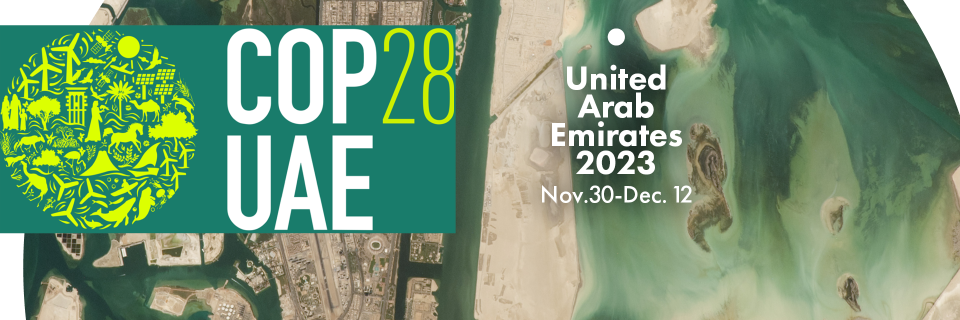In advance of the 2023 UN Conference on climate change, Nov. 30 - Dec. 12, 2023, take a look at a two page resource guide to read and share. Download as PDF
What?
COP, or “Conference of the Parties” is the UN Climate Summit that takes place in a different host city each year. It is the supreme decision-making body of the United Nations Convention on Climate Change (UNFCCC). This year is COP 28, which is the 28th time that nations of the world will gather to address the global climate change crisis.
Where?
COP 28 will take place in the United Arab Emirates, a controversial venue given that nation’s status as a major oil producer. The President-Designate of COP28, Sultan Ahmed Al Jaber, is also chief executive of the Abu Dhabi National Oil Company (Adnoc). Although the UAE has also made significant investments in renewable energy, some compare this to putting the fox in charge of the henhouse.
Who?
Some 70,000 people expected:
- The “parties”, i.e. official delegations from almost all of the world’s countries. The smallest nation represented will be the Holy See.
- Many “accredited observers” including: Civil society, faith organizations, business (including fossil fuel companies)activists, politicians, students, business, military, and others, among them Maryknoll missioners.
Why?
Our beloved common home is crying out. This year is on track to be the hottest in history. Extreme climate events multiply: record droughts, floods, fires, iceberg melts, sea rise, record heatwaves and more. The world shouldn’t have to wait 28 times for leaders to get this right, but at this point, it’s the only forum we have.
Major progress was made at the 2015 Paris Agreement, a legally binding international treaty on climate change with the goal of holding the increase in the global average temperature to well below 2°C above pre-industrial levels (and pursue efforts to keep it to a 1.5°C ). Follow-through has been disappointing, though, and there is a 50% chance we will surpass that.
There is a very brief window of time to change course: leading climate scientists at the IPCC have given us six years.
What will happen?
The COP 28 conference will unfold on multiple levels, each of which will influence on another. Some key aspects:
Global Stocktake: For the first time, this inventory of exactly where we stand in regard to keeping global temperatures to a 1.5 degree rise will be presented. Exactly how far off track are we and what do we need to do?
High-Level Segment: Lots of speeches, sound bites and photo ops here
Stakeholder Engagement: Increasing inclusion of key voices such as the indigenous who have stewarded our planet in the right way and youth who will bear the effects of decisions
Exhibitions: Innovators of alternative energy solutions will rub elbows with oil companies in sheep skin
Side Events: Much of the real interchange of ideas and inspirations happens here.
Hopes & ambitions?
Maryknoll representatives to the UN and other faith leaders hope for the following outcomes from COP28:
- Fast, full and fair phase-out of fossil fuels (coal, oil, gas) and their subsidies, beginning with historically and currently large and wealthy polluters, to assure 1.5°C temperature limit by 2050.
- The tripling of renewable energy that is fair, safe, and human rights compliant.
- Follow-through on climate finance commitments to developed countries by mobilizing $100 billion per year.
- Operationalization of a Loss and Damage Fund fit-for-purpose that is accessible, comprehensive, restorative, representative, efficient and effective.
- Inclusion of food systems and food security in climate negotiations. Steps taken to include this issue at COP 27 must move forward.
- Strong US leadership: As the world’s wealthiest country and largest historical carbon emitter, the US must lead on emissions reduction and scale up contributions to international climate funding.

